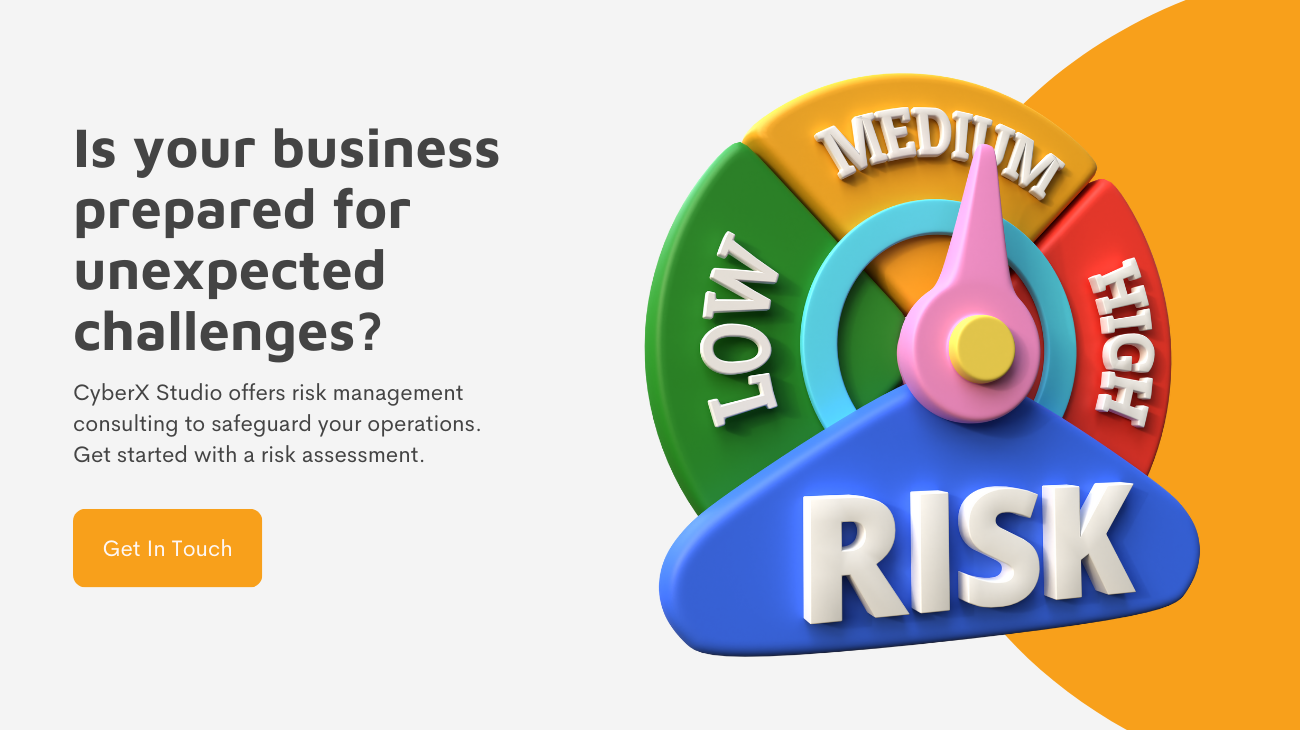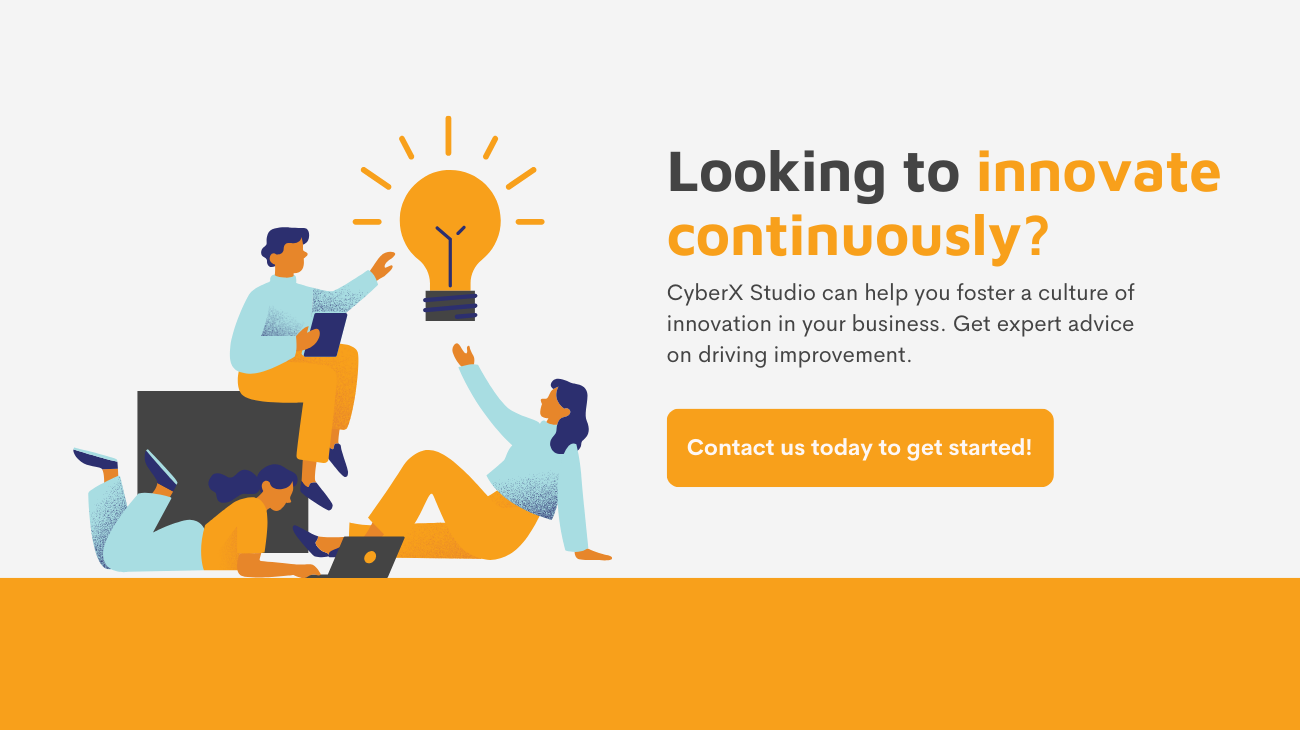The Ultimate Guide to Successfully Launching Your Startup: Key Aspects Every New Business Owner Must Know
Starting a new business is an exhilarating journey, but it comes with its own set of challenges. To ensure that your startup is set up for success, it’s crucial to address all the critical aspects of launching a business, from validating your idea to planning your exit strategy.
This comprehensive guide will walk you through every step, providing actionable insights and key actions for each stage of the startup journey. By understanding and implementing these strategies, you can effectively navigate the complexities of launching and growing your business.
Click here to learn more about 10 Incredible Digital Marketing Tips & Tricks to Boost Small Businesses
Validate Your Business Idea
Validation ensures your business idea has a real market demand and addresses customer pain points. Without proper business idea validation, startups often face the risk of developing products that no one needs.
Key Actions:
- Conduct Surveys and Interviews: Reach out to potential customers using online surveys or face-to-face interviews to gather feedback on your idea.
- Create a Focus Group: Assemble a small group of individuals from your target market to discuss and provide feedback on your concept.
- Test with a Minimum Viable Product (MVP): Develop an MVP to test your idea with early adopters and gather valuable feedback on features and usability.
- Use Digital Tools: Utilize platforms like Google Trends, social media analytics, and keyword research tools to conduct market research for startups and assess demand.
- Analyze Competitors: Study competitors to understand their strengths and weaknesses, pricing, and customer feedback. Use a SWOT analysis for startups to identify gaps where your product can excel.
Conduct In-Depth Market Research
Market research is the backbone of any successful startup. It helps you understand your target market, industry trends, and the competitive landscape, allowing you to make informed decisions about your product or service.
Key Actions:
- Identify Market Segments: Break down your market into segments based on demographics, behavior, needs, and purchasing power, focusing on target market analysis.
- Study Market Size and Growth Potential: Use industry reports, statistical databases, and online resources like Statista to gauge the market size and growth rate.
- Analyze Industry Trends: Keep an eye on startup market trends, such as technological advancements, economic changes, and consumer behavior shifts.
- Competitor Benchmarking: Analyze direct and indirect competitors, noting their product offerings, pricing, marketing strategies, and customer feedback to better understand customer needs.
- Conduct a PEST Analysis (Political, Economic, Social, Technological): Evaluate how external factors might affect your market and business operations.
Develop a Strong Business Model and Strategy
Your business model defines how your company creates, delivers, and captures value. Choose a model that aligns with your product and market needs—whether it’s B2B, B2C, SaaS, subscription-based, or e-commerce. Clearly outline your revenue streams, pricing strategy, and the customer journey.
Key Actions:
- Choose the Right Business Model for Startups: Decide if your business will operate as B2B, B2C, SaaS, subscription-based, or other models based on your product and market needs.
- Define Revenue Streams: Identify how your business will make money—through sales, subscriptions, licensing, advertising, etc.
- Develop Your Pricing Strategy for Startups: Set pricing that reflects your brand positioning, covers costs, and appeals to your target market. Consider strategies like competitive pricing, value-based pricing, or freemium models.
- Map Out the Customer Journey: Understand the touchpoints from discovery to purchase and optimize each stage for a seamless customer experience.
- Plan Your Go-To-Market Strategy: Outline how you will introduce your product to the market, including launch tactics, sales channels, and promotional activities.
Financial Planning and Budgeting: How to Distribute Your Investment Wisely
Proper startup budgeting and financial planning for startups are crucial for sustaining your business through its early stages. Allocate resources wisely to key areas of your business to ensure growth and stability.
Key Actions:
- Create Detailed Financial Projections: Develop projections for revenue, expenses, and cash flow for the first 1-3 years of operation. Use these to guide decision-making and assess financial health.
- Identify Initial Costs and Ongoing Expenses: List all startup costs (e.g., equipment, software, marketing) and ongoing expenses (e.g., salaries, rent, utilities).
- Allocate Budget to Key Areas:
- Product Development (30-40%): Invest in creating a quality MVP that can be refined based on user feedback.
- Marketing and Sales (20-30%): Focus on building brand awareness and driving customer acquisition through digital marketing, advertising, and sales efforts.
- Operations and Infrastructure (10-20%): Cover costs related to office space, technology, logistics, and supply chain management.
- Human Resources (10-15%): Invest in hiring the right talent, training, and employee benefits to build a strong team.
- Legal and Compliance (5-10%): Budget for legal fees, registrations, intellectual property protection, and compliance with regulations.
- Contingency Fund (5%): Set aside funds for unexpected expenses, such as market changes, emergencies, or operational hiccups.
- Use Financial Tools: Utilize accounting software like QuickBooks or Xero to manage finances, track expenses, and generate financial reports.
Legal and Compliance Requirements
Meeting legal requirements for startups protects your business from penalties and legal disputes. It also builds trust with customers, partners, and investors.
Key Actions:
- Choose the Right Legal Structure: Decide between structures like LLC, Corporation, Partnership, or Sole Proprietorship based on liability, taxation, and management needs.
- Business Registration: Complete the necessary registrations with local, state, and federal authorities. Obtain an EIN (Employer Identification Number) for tax purposes.
- Obtain Required Licenses and Permits: Identify the licenses and permits required for your industry and location, such as health permits, zoning permits, or professional licenses.
- Draft Contracts and Agreements: Work with legal counsel to draft contracts, including terms of service, employment agreements, and partnership agreements.
- Intellectual Property Protection: Secure trademarks, copyrights, or patents to protect your brand and products from infringement.
Funding and Capital Acquisition
Securing adequate funding ensures that your startup has the resources it needs to grow. Explore different startup funding options that align with your business model and growth plans.
Key Actions:
- Assess Your Funding Needs: Determine how much capital you need based on your initial costs, projected cash flow, and growth targets.
- Explore Funding Options:
- Bootstrapping: Use personal savings or revenue generated by the business to fund growth.
- Bank Loans and Lines of Credit: Approach banks for loans if you have a solid business plan and credit history.
- Angel Investors and Venture Capital: Pitch to angel investors or venture capitalists who provide funding in exchange for equity.
- Crowdfunding: Use platforms like Kickstarter or Indiegogo to raise funds directly from your target audience.
- Prepare a Compelling Pitch Deck: Create a clear, concise presentation that outlines your business model, market opportunity, financial projections, and funding needs. This investor pitch deck is key to securing capital.
- Network with Investors: Attend pitch events, join startup incubators, or leverage online platforms like AngelList to connect with potential investors.
Understanding how to raise capital for a startup is critical for growth, and careful startup cash flow management ensures your funds are used wisely.
Product/Service Development
Developing your product or service with a focus on quality, usability, and customer needs is essential for gaining traction in the market.
Key Actions:
- Create a Product Roadmap: Outline the stages of product development for startups, including key milestones, deadlines, and deliverables.
- Focus on MVP Development: Start with a Minimum Viable Product (MVP) for startups that includes essential features to solve the core problem of your target audience.
- Gather User Feedback Early: Launch your MVP to a small group of early adopters to collect feedback on functionality, usability, and areas for improvement.
- Iterate and Improve: Use feedback to refine your service prototype development, fix bugs, and add new features that enhance user experience.
- Plan for Scalability: Ensure your product architecture and supply chain can handle growth while maintaining quality control in startups.
Build Your Brand and Positioning
Building a strong brand helps differentiate your startup from competitors and creates a lasting impression on your audience.
Key Actions:
- Define Your Brand Identity: Develop your startup branding by focusing on your mission, vision, values, and unique selling propositions (USPs) that set you apart from the competition.
Related: Top 7 Roles of Branding in Business Marketing Success
- Create Visual Branding Elements: Design a logo, choose brand colors, and create a visual style guide that reflects your brand personality. These visual elements play a crucial role in brand positioning for startups.
- Develop Your Brand Voice: Establish a consistent tone and style for all your communications, from website content to social media posts.
- Build a Professional Website: Your website is often the first point of contact for customers. Website design for startups should be user-friendly, mobile-responsive, and SEO-optimized.
- Consistent Messaging Across Channels: Ensure that your branding and messaging are consistent across all touchpoints, including your website, social media, marketing materials, and customer communications.
Related: Why Your Business Needs a Website Redesign: Key Signs It’s Time for an Upgrade
Marketing and Sales Strategy
A well-executed marketing and sales strategy drives customer acquisition, brand awareness, and revenue growth.
Key Actions:
- Develop a Digital Marketing Plan: Outline your marketing tactics, including content marketing, SEO, social media, email marketing, and paid advertising.
- Leverage Content Marketing: Create valuable content that educates, engages, and converts your audience. This can include blogs, videos, infographics, and case studies tailored for digital marketing for startups.
- Invest in SEO for Startups: Optimize your website and content for search engines to increase organic traffic and improve visibility in search results.
- Set Up Paid Advertising Campaigns: Use Google Ads, Facebook Ads, LinkedIn Ads, or other paid platforms to reach your target audience quickly and effectively.
- Implement a CRM System: Use customer relationship management (CRM) software to track leads, automate follow-ups, and manage sales pipelines efficiently
- Develop a Sales Funnel: Create a structured sales funnel that guides prospects from awareness to consideration and finally to purchase.
Operations and Infrastructure
Setting up efficient operations and infrastructure is crucial to ensuring smooth day-to-day business functions, especially in a startup operations setup.
Key Actions:
- Choose a Suitable Location: Decide whether to operate from a physical office, co-working space, or remotely, based on your business model and team needs.
- Set Up Technology Infrastructure: Invest in the necessary hardware, software, and cloud services to support your operations, including communication tools, project management software, and accounting systems.
- Establish Processes for Efficiency: Develop standard operating procedures (SOPs) for production, quality control, customer service, and other key areas to ensure consistency and efficiency.
- Optimize Supply Chain Management and Logistics for Startups: Establish reliable suppliers, streamline inventory management, and set up logistics to ensure timely delivery of products to customers.
- Monitor Performance: Use key metrics to track the efficiency of operations, identify bottlenecks, and implement process improvements as needed.
Human Resources and Staffing – Staff Augmentation
A strong team is the backbone of any successful startup. Hiring the right talent and fostering a positive work culture are essential for growth.
Key Actions:
- Identify Key Roles and Skills: Outline the roles that are critical for your business and the skills required for each position. This is crucial when hiring for startups to ensure you have the right expertise from the start.
- Develop Job Descriptions: Clearly define the responsibilities, qualifications, and expectations for each role to attract the right candidates. Accurate job descriptions are a key part of HR policies for startups.
- Hire Strategically: Use a combination of full-time, part-time, freelance, and staff augmentation to optimize your workforce and manage costs.
- Create HR Policies: Develop policies for hiring, onboarding, training, performance management, and employee benefits to ensure smooth HR operations.
- Invest in Training and Development: Provide ongoing training to help employees develop new skills and stay updated with industry trends, contributing to effective team building.
Technology and IT Setup
Investing in the right technology is crucial for operational efficiency, data security, and scalability.
Key Actions:
- Select the Right Technology Stack for Startups: Choose software and tools that support your core business functions, such as project management, accounting, customer service, and sales.
- Implement Cybersecurity for Startups: Protect your business from cyber threats with robust security protocols, including firewalls, encryption, and regular security audits.
- Ensure Data Backup and Recovery: Set up automatic data backup systems and have a recovery plan in place to safeguard against data loss.
- Integrate Systems for Efficiency: Use APIs and integrations to connect different software systems, reducing manual work and improving data flow.
- Provide IT Support for Startups: Ensure that your team has access to reliable IT support for troubleshooting, maintenance, and upgrades.
Customer Support and Service
Delivering exceptional customer support can set your business apart and build lasting relationships with your customers.
Key Actions:
- Set Up Multi-Channel Support: Offer customer support for startups through various channels, such as phone, email, live chat, and social media, to cater to customer preferences.
- Define Service Level Agreements (SLAs): Set clear expectations for response times, issue resolution, and customer service quality.
- Train Your Support Team: Provide training to customer service representatives on product knowledge, communication skills, and conflict resolution to enhance customer satisfaction.
- Use a CRM System: Implement a CRM to track customer interactions, manage support tickets, and gain insights into customer needs and behaviors.
- Collect and Act on Feedback: Regularly gather customer feedback to identify areas for improvement and make necessary adjustments to your products and services.
Risk Management and Contingency Planning
Identifying and managing potential risks is essential for the long-term sustainability of your business particularly in the context of risk management for startups.
Key Actions:
- Conduct a Risk Assessment: Identify financial, operational, market, legal, and cybersecurity risks that could impact your business.
- Develop Risk Mitigation Strategies: Implement measures to reduce or eliminate risks, such as insurance policies, diversified revenue streams, and robust cybersecurity practices tailored for startup risk mitigation.
- Create a Contingency Plan: Develop a plan for responding to unexpected events, such as supply chain disruptions, economic downturns, or data breaches, as part of your business continuity planning.
- Regularly Review and Update Risk Plans: Continuously monitor risks and update your mitigation strategies and contingency plans as needed.
Logistics and Supply Chain Management
Efficient logistics and supply chain management for startups ensure your products are delivered on time and at the right cost.
Key Actions:
- Establish Reliable Supplier Relationships: Choose suppliers that offer quality products, competitive pricing, and reliable delivery times. Maintain good communication to address issues quickly.
- Implement Inventory Management Systems: Use software to track inventory levels, manage stock, and automate reordering processes to avoid stockouts or overstocking.
- Optimize Warehousing and Distribution: Streamline warehousing processes to reduce costs and improve order fulfillment speed. Use logistics partners that provide cost-effective and reliable delivery solutions.
- Monitor and Optimize Supply Chain Performance: Regularly evaluate your supply chain for inefficiencies, cost-saving opportunities, and potential risks.
Scaling and Growth Strategy
Scaling your business involves expanding your operations to increase revenue while maintaining or improving efficiency.
Key Actions:
- Identify Growth Opportunities: Explore new markets, product lines, or customer segments that align with your business strengths as part of your growth strategies.
- Invest in Scalable Technology: Choose technology solutions that can handle increased demand without significant additional costs to support your scalability in startups.
- Develop a Scalable Operations Plan: Design processes and workflows that can be easily replicated and expanded as your business grows, focusing on scaling strategies for startups.
- Build a Scalable Team: Hire adaptable employees who can take on additional responsibilities as your business expands. Consider outsourcing or automation to manage scaling costs.
- Measure Scalability Metrics: Track key metrics such as customer acquisition costs, revenue per employee, and operational efficiency to gauge your scalability and ensure successful market expansion.
Customer Experience and Feedback Loop
Creating a positive customer experience optimization is vital for building loyalty and driving repeat business.
Key Actions:
- Map the Customer Journey: Identify all touchpoints where customers interact with your brand, from initial awareness to post-purchase support, and optimize each stage for a seamless experience.
- Personalize Customer Interactions: Use customer data to tailor your communications, offers, and support to individual preferences and needs, enhancing customer satisfaction.
- Implement a Feedback Loop: Regularly collect feedback through surveys, reviews, and direct interactions. Use this feedback to identify areas for improvement and make data-driven decisions.
- Enhance User Experience: Continuously refine your product or service based on customer feedback to ensure it meets or exceeds expectations, contributing to long-term customer retention.
Networking and Partnerships
Building networking for startups can significantly enhance your visibility, resources, and growth opportunities.
Key Actions:
- Attend Industry Events: Participate in conferences, trade shows, and networking events to connect with potential partners, customers, and investors.
- Join Business Associations: Become a member of local and industry-specific business associations to access resources, support, and networking opportunities.
- Collaborate with Complementary Businesses: Form strategic partnerships with companies that offer complementary products or services to expand your reach and enhance your offerings.
- Leverage Online Networking Platforms: Use LinkedIn, industry forums, and online groups to connect with professionals and stay informed about industry trends. Online platforms are excellent tools for fostering business collaboration and building your networking for startups.
Environmental, Social, and Governance (ESG) Considerations
Incorporating ESG for startups principles can help your startup build a positive reputation and attract socially conscious customers and investors.
Key Actions:
- Develop an ESG Strategy: Outline your approach to sustainability in startups, social responsibility, and ethical governance policies. Set measurable goals and report on your progress.
- Implement Sustainable Practices: Adopt eco-friendly processes, such as reducing waste, conserving energy, and using sustainable materials in production.
- Promote Diversity and Inclusion: Foster a diverse and inclusive workplace that values different perspectives and encourages collaboration.
- Engage in Community Initiatives: Support local community projects, volunteer work, or charitable donations that align with your brand values.
Exit Strategy and Long-term Vision
An exit strategy for startups outlines how you plan to leave or sell your business eventually. Planning for this early helps you make decisions that align with your long-term vision.
Key Actions:
- Identify Exit Options: Consider potential exit strategies such as selling the business, merging with another company, going public, or passing ownership to a successor.
- Develop a Succession Plan: If you plan to pass the business to a family member or employee, outline the transition process and train your successor.
- Prepare for Due Diligence: Keep financial records, legal documents, and operational reports up to date to facilitate a smooth exit when the time comes.
- Build a Valuable Brand: Focus on building a strong brand, loyal customer base, and efficient operations to maximize your business’s valuation.
- Regularly Revisit Your Exit Plan: Adjust your exit strategy based on changes in the market, industry, or your personal goals.
Continuous Improvement and Innovation
Continuously improving your processes, products, and services keeps your business competitive and responsive to market changes.
Key Actions:
- Encourage a Culture of Innovation: Foster an environment where employees feel empowered to share new ideas and suggest improvements, which is essential for driving innovation in startups.
- Use Feedback for Improvement: Collect feedback from customers, employees, and partners to identify opportunities for enhancing your products and optimizing business processes.
- Invest in Research and Development: Allocate resources to R&D to explore new technologies, refine existing products, or develop new offerings, ensuring continuous improvement.
- Stay Informed About Industry Trends: Keep up with industry publications, competitor activities, and market changes to anticipate shifts and adapt to market trends accordingly.
Metrics, Analytics, and Performance Monitoring
Tracking key performance indicators (KPIs) allows you to measure success and identify areas for improvement.
Key Actions:
- Define Key Performance Indicators: Identify the performance metrics for startups that are most important to your business, such as customer acquisition cost, conversion rates, lifetime value, and churn rate.
- Use Analytics Tools: Implement tools like Google Analytics, CRM analytics, and financial software to track performance and gain insights into your business operations.
- Regularly Review Performance: Schedule regular reviews of your KPIs for startups to assess progress toward goals and make data-driven decisions.
- Adjust Strategies as Needed: Use performance data to adjust your marketing, sales, and operational strategies for improved results.
Customer Acquisition and Retention Strategies
Acquiring new customers is essential, but retention strategies are key to sustainable growth and profitability.
Key Actions:
- Develop Targeted Marketing Campaigns: Use targeted ads, content marketing, and SEO to attract your ideal customers and drive traffic to your site, enhancing your customer acquisition efforts.
- Implement Retention Programs: Use loyalty programs, exclusive offers, and personalized communication to keep customers engaged and encourage repeat purchases.
- Use Referral Marketing: Leverage your satisfied customers to refer others through referral programs and incentives.
- Monitor Churn Rates: Track the reasons why customers leave and take proactive measures to address those issues, ultimately reducing churn rates.
Data Protection and Privacy
Protecting your business and customer data is critical in maintaining trust and complying with regulations. Here are key actions to enhance data protection for startups:
Key Actions:
- Develop a Data Protection Policy: Establish a clear policy outlining how your business collects, uses, stores, and protects personal data.
- Implement Security Measures: Use encryption, firewalls, and secure access controls to safeguard your data from unauthorized access.
- Train Employees on Data Privacy: Ensure your team understands data protection laws and follows best practices to maintain security, emphasizing the importance of privacy compliance.
- Regularly Audit Data Security: Conduct periodic audits of your data security practices to identify vulnerabilities and make necessary improvements, including strategies for backup and recovery.
Community Engagement and Public Relations
Building a positive relationship with your community engagement and managing your public image are essential for long-term success.
Key Actions:
- Develop a Public Relations Strategy for Startups: Create a plan for how you will communicate with the public, handle media inquiries, and promote your business’s achievements.
- Engage with the Community: Participate in local events, sponsor community initiatives, or volunteer to build goodwill and establish a positive brand image.
- Monitor Your Online Reputation: Keep track of reviews and social media mentions to address customer concerns quickly and maintain a positive public perception.
- Build Relationships with Media: Connect with journalists and industry publications to gain coverage and establish your business as a thought leader.
Final Thoughts: Planning for Long-term Success
Starting a business is a journey filled with learning, adapting, and evolving. By addressing these 25 critical aspects, especially focusing on strategic budgeting and efficient resource allocation, you can set your startup on the path to success. Always keep an eye on market trends, continuously innovate, and stay agile to outmaneuver competitors. These startup success tips will guide you on how to start a successful business while leveraging effective digital marketing for startups.
About CyberX Studio
At CyberX Studio, we customize the way cyberspace can elevate your business growth with the help of digital marketing services and skyrocket your revenues. We are the best digital marketing agency to strategize, develop, and execute robust and reliable web solutions and digital marketing systems for your business to succeed online.




























